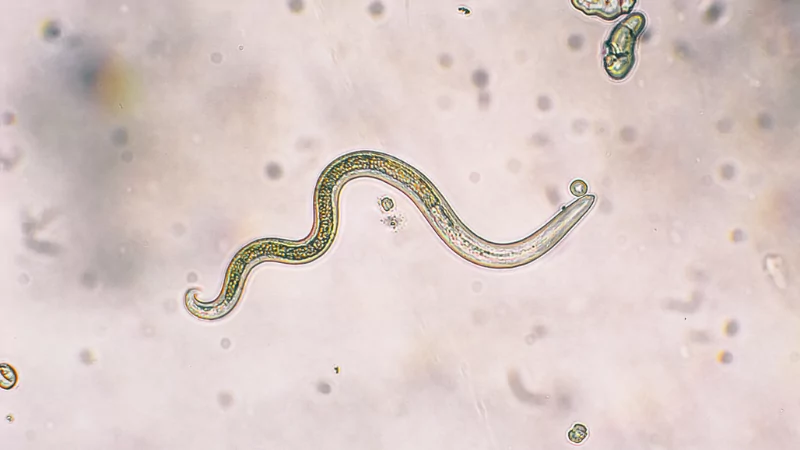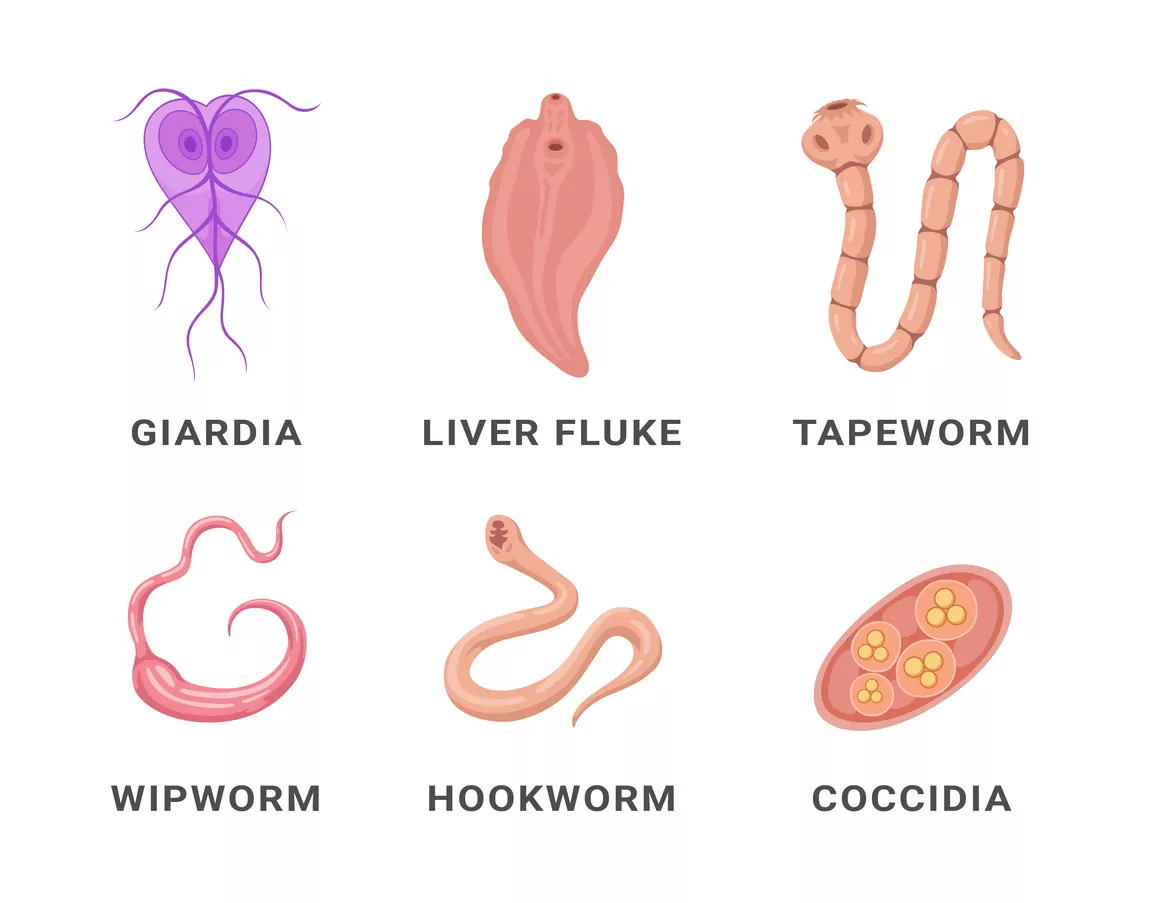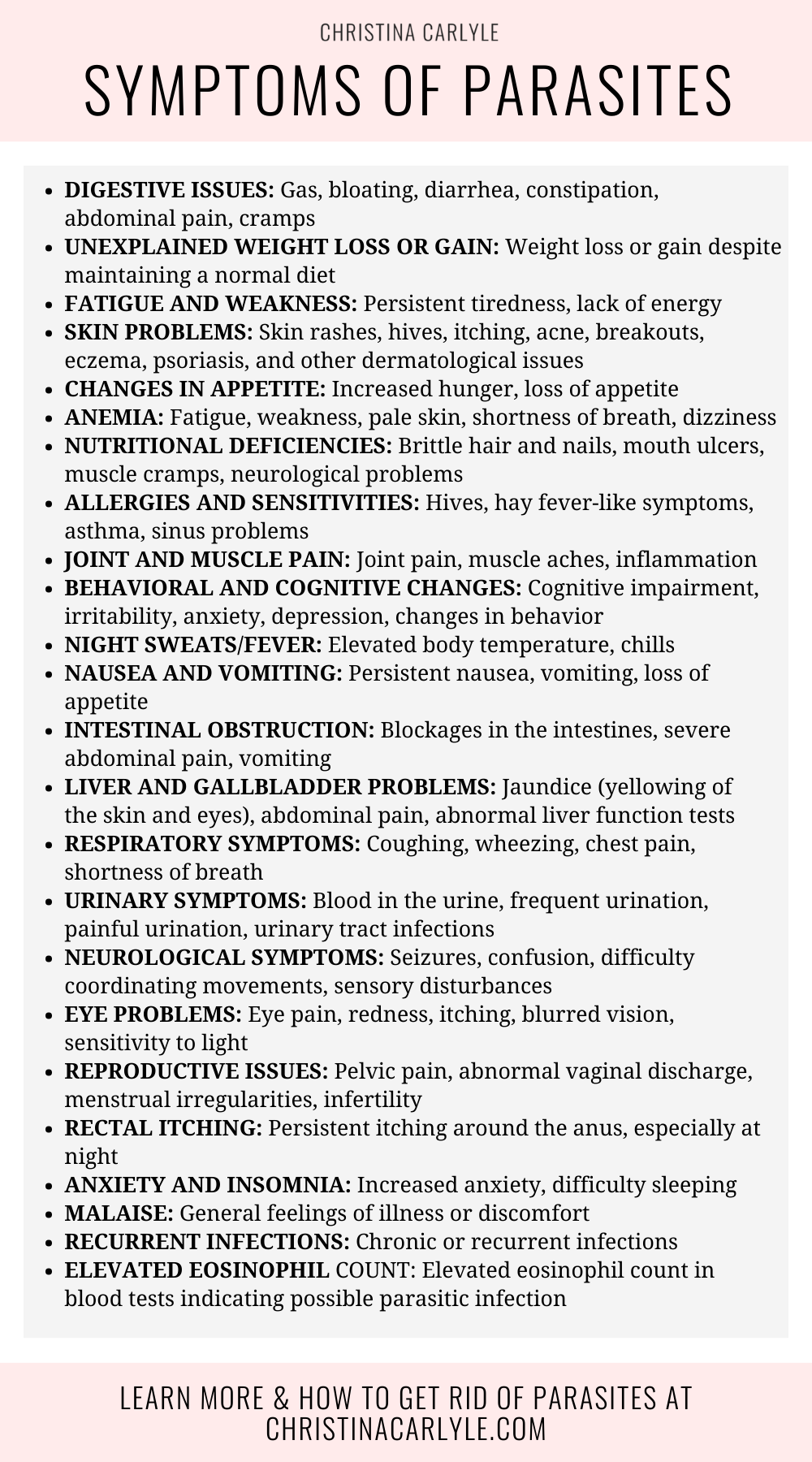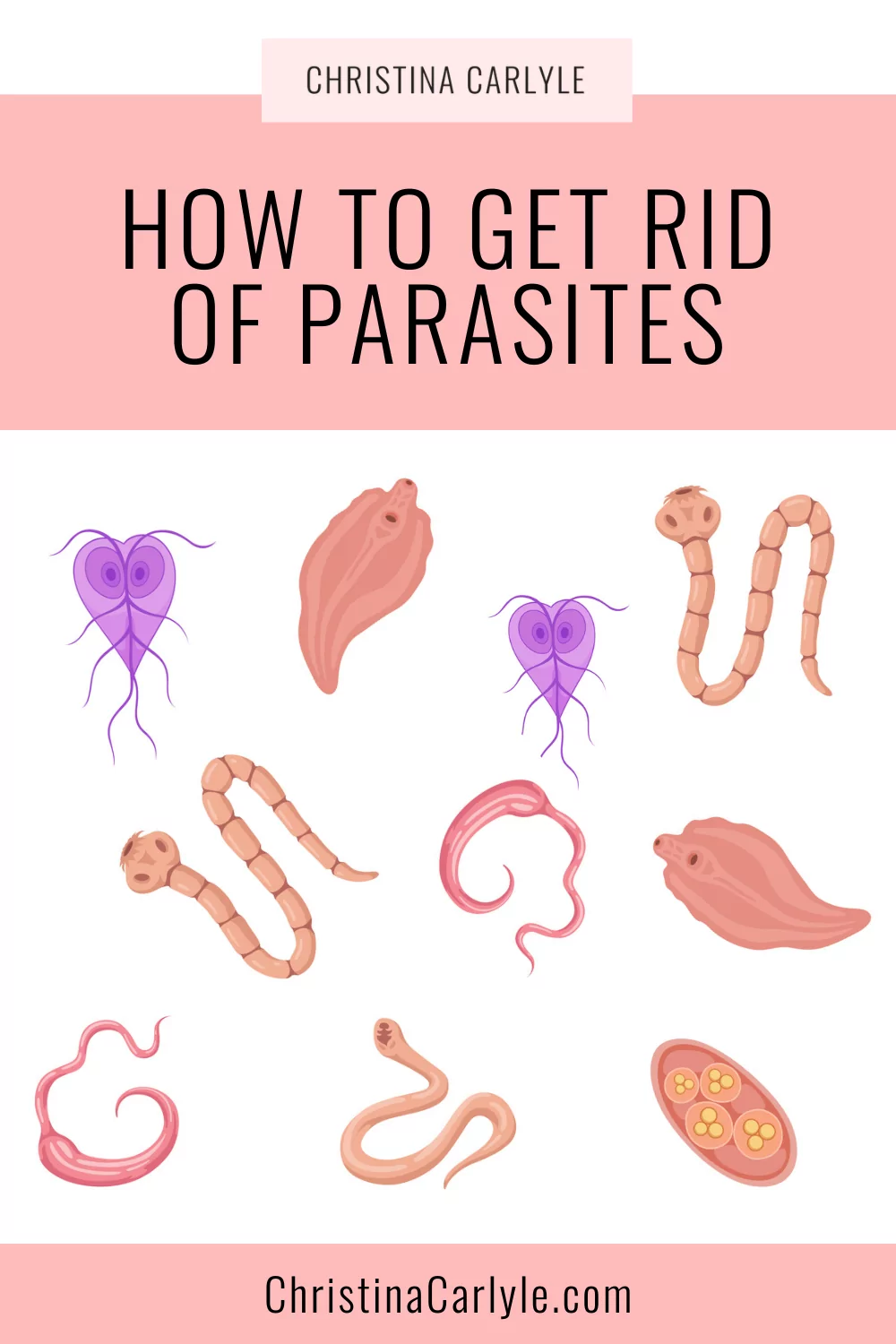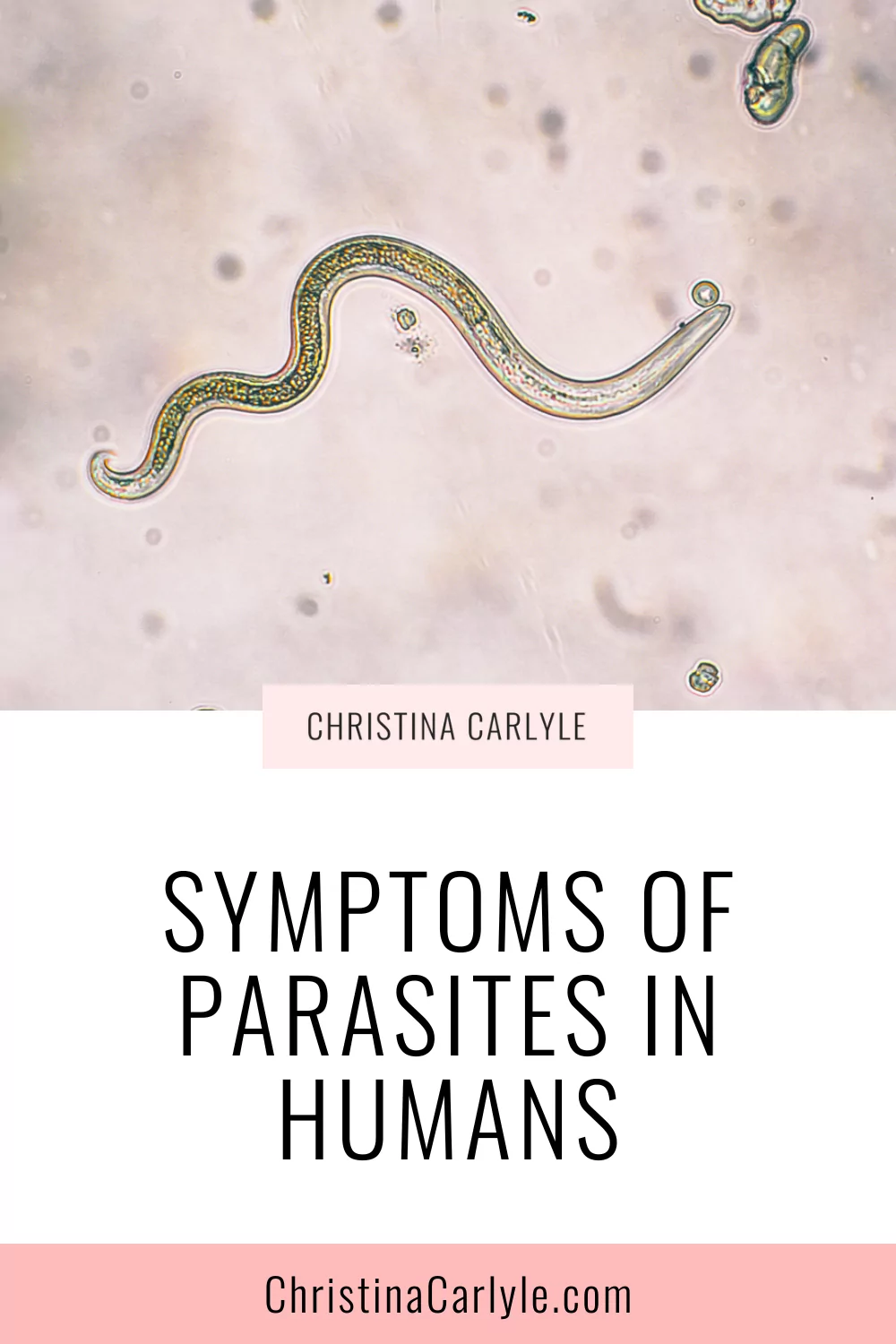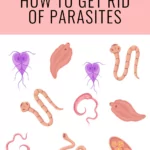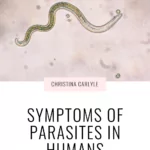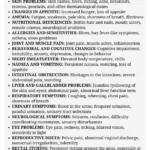Last Updated on March 1, 2024
The full moon is a few days away… have you ever felt ‘off’ during a full moon? If so, this post about the symptoms of parasites in humans is for you. HINT: Feeling ‘off’ and having mood/energy swings during the full moon are symptoms of parasites…. They breed during the full moon.
I used to feel bat shit during the full moon and always blamed it on my horoscope. BOY WAS I WRONG.
I first learned about parasites when I worked in the ICU. Not only did I see end-of-life patients with them I was also surprised to learn that all of the nurses in my unit routinely did parasite cleanses. (this was approx 20 years ago) But I never thought it could happen to me. AGAIN BOY WAS I WRONG LOL
A parasitic infection is the reason why I had to have my gallbladder removed. I was told after removal I’d feel so much better. Lies! Instead, I felt significantly worse because my gallbladder wasn’t the issue. Parasites were.
And you want to know the real kicker? I had spent over $3000 and did 4 different GI Map stool tests to diagnose what was going on with me – all of which told me I was ‘normal’. I was not. I was LOADED with parasites. And I have the pictures and videos to prove it… I spare you those though.
When I shared the news of my gallbladder surgery to my VIP list (my newsletter I share every Thursday) I had dozens of people emailing me with questions and concerns because they were having similar issues, already had their gallbladders out, or were facing gallbladder surgery and had mystery symptoms.
Since upgrading my professional credentials (I’m a functional diagnostic health practitioner now FYI) I’ve been working one-on-one with clients (off and online) who have chronic cases of mystery symptoms that are getting worse despite trying to get healthy via lifestyle changes. And guess what they all have in common? They ALL have had stealth parasitic infections.
That’s why I’m sharing a deep dive about parasites. If you suspect you have parasites or have mystery symptoms that you can’t explain despite having ‘normal’ labs this is for you! I’ll be covering:
- The different types of parasites you can have (there are hundreds)
- Where parasites live (in and on) the body
- How you get parasites… including all risk factors for exposure
- The Parasite Pulse Test
- Symptoms of Parasites in Humans
- How to get rid of Parasites
I’ll also share the only thing that helped me (and my clients) clear parasites… and no, it wasn’t a gimmicky product I found on TikTok or Amazon. I tried those (lol!) a few years ago and they did NOTHING.
Let’s dig in.
TYPES OF PARASITES FOUND IN HUMANS
Parasites come in various forms, including protozoa, helminths (worms), and ectoparasites. Humans can be host to nearly 300 species of parasitic worms and over 70 species of protozoa, some derived from our primate ancestors and some acquired from the animals we have domesticated or come in contact with during our relatively short history on Earth.
Here’s an overview of the different, most common, kinds of parasites found in the human body:
- Protozoa: Protozoa are single-celled organisms that can infect humans and cause diseases. They are classified based on their method of movement and include categories such as amoebae, flagellates, ciliates, and sporozoans. Examples of protozoan parasites include:
- Plasmodium: Causes malaria.
- Giardia lamblia: Causes giardiasis, a diarrheal illness.
- Entamoeba histolytica: Causes amoebiasis, an intestinal infection.
- Toxoplasma gondii: Causes toxoplasmosis, which can affect the brain and other organs.
- Helminths (Worms): Helminths are multicellular parasites that can be further categorized into three main groups: flatworms (platyhelminths), roundworms (nematodes), and thorny-headed worms (acanthocephalans). Just one egg can cause worms. Some worms lay as many as 200,000 eggs throughout their life cycle. Some common examples include:
- Tapeworms: Such as Taenia solium (pork tapeworm) and Taenia saginata (beef tapeworm), which infect the intestines. Tapeworms can be up to 40+ inches in length in the human body… so imagine how damaging that can be.
- Roundworms: Including Ascaris lumbricoides (giant roundworm) and hookworms (Necator americanus, Ancylostoma duodenale), which infect the intestines.
- Flukes: Such as Schistosoma spp., which infect the urinary bladder, liver, intestines, or blood vessels.
- Pinworms: Enterobius vermicularis, which typically infects the intestines and causes enterobiasis (pinworm infection).
- Ectoparasites: These parasites live on the outside of the host’s body. Common examples include:
- Ticks: Transmit diseases such as Lyme disease and Rocky Mountain spotted fever.
- Fleas: Can transmit diseases such as plague (caused by Yersinia pestis) and bartonellosis.
- Lice: Including head lice (Pediculus humanus capitis), body lice (Pediculus humanus corporis), and pubic lice (Pthirus pubis).
- Mites: Such as Sarcoptes scabiei, which causes scabies.
- Protozoal and Helminthic Parasites of Blood: Some parasites specifically infect the bloodstream and can cause serious diseases. Examples include:
- Trypanosoma spp.: Such as Trypanosoma brucei, which causes African sleeping sickness.
- Plasmodium spp.: Malaria parasites transmitted by mosquitoes.
- Babesia spp.: Cause babesiosis, a malaria-like illness transmitted by ticks.
- Intestinal Protozoa: These parasites primarily infect the gastrointestinal tract and include organisms such as Giardia lamblia, Cryptosporidium spp., and Entamoeba histolytica.
- Tissue Nematodes: Certain nematodes infect tissues and organs other than the intestines. Examples include filarial worms such as Wuchereria bancrofti, which causes lymphatic filariasis.
- Cestodes: Tapeworms are examples of cestodes, which are flatworms that typically inhabit the intestines of their hosts.
- Trematodes: Also known as flukes, trematodes are flatworms that include species such as Schistosoma spp. and Fasciola spp.
These are just a few examples of the many types of parasites that can infect humans and other animals. Each type of parasite has its own unique life cycle, mode of transmission, and effects on the host’s health.
Each can also live in different parts of the body. That means you can be loaded with parasites but still have a negative result on a GI stool test…. because parasites often migrate out of the GI tract and into other parts of the body where they remain undetected for years.
Where parasites live in the human body
Here are the most common places parasites live within the human body.
- Gastrointestinal Tract: Many parasites inhabit the gastrointestinal tract, including the stomach, small intestine, and large intestine. These parasites can cause symptoms such as diarrhea, abdominal pain, bloating, and nausea. Examples of parasites that live in the gastrointestinal tract include:
- Protozoa: Giardia lamblia, Entamoeba histolytica
- Helminths (Worms): Ascaris lumbricoides, hookworms, tapeworms, pinworms
- Liver: Certain parasites can infect the liver, causing symptoms such as abdominal pain, jaundice, and liver enlargement. Liver flukes such as Fasciola hepatica and Clonorchis sinensis are examples of parasites that live in the liver.
- Bloodstream: Some parasites circulate in the bloodstream, where they can cause systemic infections and affect various organs and tissues. Examples include:
- Protozoa: Plasmodium spp. (malaria parasites), Trypanosoma spp.
- Nematodes: Filarial worms such as Wuchereria bancrofti
- Lymphatic System: Filariasis, caused by filarial worms such as Wuchereria bancrofti and Brugia malayi, affects the lymphatic system and can lead to symptoms such as lymphedema and elephantiasis.
- Muscles and Tissues: Certain parasites, such as Trichinella spiralis (the cause of trichinellosis), can invade muscle tissues, leading to symptoms such as muscle pain, weakness, and swelling.
- Brain and Nervous System: In rare cases, parasites can invade the central nervous system (CNS) and brain, causing serious neurological symptoms. Examples include Toxoplasma gondii, which can cause toxoplasmosis, and the larval stage of Taenia solium, which can cause neurocysticercosis.
- Respiratory System: Some parasites can infect the respiratory tract, leading to symptoms such as coughing, wheezing, and difficulty breathing. Examples include lung flukes (e.g., Paragonimus spp.) and certain protozoa (e.g., Pneumocystis jirovecii, which causes pneumocystis pneumonia in immunocompromised individuals).
- Skin and Subcutaneous Tissues: Ectoparasites such as ticks, mites, and lice live on the surface of the skin or burrow into the skin, causing symptoms such as itching, rash, and skin irritation. Additionally, certain parasites can cause skin infections, ulcers, or lesions, such as Leishmania spp. (causing leishmaniasis) and Schistosoma spp. (causing swimmer’s itch).
HOW DO YOU GET PARASITES?
Several factors can increase the risk of acquiring a parasitic infection. These risk factors can vary depending on the type of parasite and the mode of transmission. Here are some of the most common risk factors:
- Poor Sanitation: Lack of access to clean water and proper sanitation facilities increases the risk of exposure to waterborne and foodborne parasites. Contaminated water sources, inadequate sewage disposal, and poor hygiene practices contribute to the spread of parasites. HINT: The filter on your fridge isn’t strong enough to filter out parasites or parasite eggs…
- Travel to Endemic Areas: Traveling to regions where parasitic infections are more prevalent, particularly tropical and subtropical areas with poor sanitation and hygiene standards, increases the risk of exposure to parasites. Often these areas of the world have mandatory parasite cleanses. Kids in these countries have to do mandatory parasite protocols to be able to attend school. In other countries, it’s normal to do a parasite cleanse 4 times a year… but it’s not common or required in the USA.
- Consumption of Contaminated Food or Water or Eating Raw Meat/Produce: Eating or drinking contaminated food or water can introduce parasites into the body. Consuming raw or undercooked meat, seafood, fruits, and vegetables, like sushi, salads, etc. as well as unpasteurized dairy products, carries a higher risk of parasitic infection. Produce and tap water are common sources of parasites, both the parasite itself and its eggs.
- Poor Food Handling Practices: Improper food handling, storage, and preparation can lead to contamination with parasites. Cross-contamination between raw and cooked foods, inadequate washing of produce, and improper storage temperatures can increase the risk of parasitic infections.
- Contact with Infected Individuals: Direct or indirect contact with individuals who are infected with parasites can transmit the parasites. This includes close contact with family members, caregivers, or sexual partners who have parasitic infections. Parasites can be transmitted similarly to an STD.
- Occupational Exposure: Certain occupations may increase the risk of exposure to parasites. For example, agricultural workers, veterinarians, healthcare workers, dentists, and laboratory personnel may have increased exposure to parasites through contact with animals, contaminated soil, or infected individuals.
- Poor Hygiene Practices: Inadequate personal hygiene, such as inadequate handwashing after using the toilet, handling pets, or before handling food, increases the risk of ingesting or coming into contact with parasite eggs or cysts. Parasites are commonly transmitted in restaurants, airports, and public restrooms.
- Immunocompromised Conditions: Individuals with weakened immune systems, such as those with chronic infections, HIV/AIDS, organ transplant recipients, and individuals undergoing chemotherapy, are at higher risk of developing severe or recurrent parasitic infections due to their reduced ability to fight off pathogens. If you have worsening symptoms, symptoms that don’t get better despite treatment/healthy habits, or if you get sick more than 1 time a year, or have recurring, drug-resistant infections – you’re immunocompromised.
- Living Conditions/Communal Housing/Hangouts: Crowded or unsanitary living conditions, or places with high occupancy (and shared water sources/restrooms) are common places, such as dorm rooms, shared houses, camps, shelters, and institutions, can facilitate the spread of parasitic infections due to close contact and poor hygiene practices. Hotels, waterparks, campgrounds, restaurants, and stadiums/theaters are all common places where parasites are more common.
- Outdoor Activities: Engaging in outdoor activities such as camping, hiking, and swimming in freshwater lakes or rivers increases the risk of exposure to parasites transmitted by vectors such as mosquitoes, ticks, and snails. Walking barefoot outside, swimming at the beach/lake, and exposure to farmland are all common ways you can contract parasites.
The Parasite Pulse Test
Parasites and parasitic infections are common. They affect millions and millions of people throughout the entire world. Many people may not notice they have an infection because they have few symptoms. Others may have serious illnesses.
There’s a joke in the functional health world that the only true test for parasites is a pulse test. If you have a pulse, you have a parasite. Every animal on the planet can have/has parasites. Dogs, cats, horses, fish, shellfish, farm animals, and birds ALL have parasites internally and externally. Humans are no different.
If you have risk factors and symptoms you most likely have parasites.
Do you have any of these symptoms? If so, I strongly recommend a professional anti-parasite protocol.
Pin this to Pinterest so you’ll have it forever
SYMPTOMS OF PARASITES
Parasitic infections can vary widely in their symptoms and severity depending on the type of parasite involved, the location of infection, and the individual’s overall health. The most common symptoms of parasites include:
- Digestive Issues: Persistent diarrhea, constipation, alternating diarrhea and constipation, bloating, gas, abdominal pain, and cramps.
- Unexplained Weight Loss and Accelerated Aging: Parasitic infections can interfere with nutrient absorption in the intestines, leading to weight loss despite maintaining a normal diet. This weight loss may occur gradually over time. Because parasites steal your nutrients they accelerate aging including wrinkles, gray hair, hair loss, and thin brittle nails.
- Fatigue and Weakness: Parasites can sap the body’s energy and nutrients, leading to fatigue, weakness, and lethargy. Chronic fatigue that doesn’t improve with rest could be a sign of a parasitic infection.
- Skin Problems: Certain parasitic infections can cause skin rashes, dandruff, acne, hives, itching, and other dermatological issues like eczema, and psoriasis. Skin symptoms may arise due to allergic reactions to parasite secretions or direct damage to the skin by the parasites themselves. Skin issues are also the direct result of inflammation and the toxic burden that the parasites cause.
- Changes in Appetite: Some people with parasitic infections may experience changes in appetite, such as increased hunger or loss of appetite. This can result from the parasite’s manipulation of the host’s hunger signals or the body’s attempt to fight off the infection. Parasites can also cause cravings for the foods they need to weaken the host to survive.
- Anemia: Certain parasites, such as hookworms, can cause chronic internal bleeding, leading to iron deficiency anemia. Symptoms include fatigue, weakness, pale skin, shortness of breath, and dizziness.
- Nutritional Deficiencies: Parasites can interfere with the absorption of essential nutrients like vitamins and minerals, leading to deficiencies. This can manifest as symptoms such as chronic illness, brittle/thinning hair and nails, mouth ulcers, muscle cramps, and neurological problems.
- Allergies and Sensitivities: Parasitic infections can trigger allergic reactions and sensitivities in some individuals. Symptoms may include hives, hay fever-like symptoms, asthma, and sinus problems.
- Joint and Muscle Pain: Some parasitic infections can cause joint pain, muscle aches, and inflammation. This is often due to the body’s immune response to the parasites or the parasites themselves migrating through the body’s tissues.
- Behavioral and Cognitive Changes: In severe cases or with certain parasites affecting the central nervous system, symptoms may include cognitive impairment, irritability, anxiety, depression, and changes in behavior.
- Night Sweats/Fever: In some cases, parasitic infections can trigger a fever as the body’s immune system responds to the presence of the parasites. Fever may accompany other symptoms of infection, such as fatigue and muscle aches. Excessive sweating and night sweats are also common.
- Nausea and Vomiting: Persistent nausea and vomiting, particularly after eating, can be a sign of certain parasitic infections affecting the digestive system. These symptoms may also be accompanied by loss of appetite.
- Visible Worms or Parasites: In cases of certain parasitic infections, such as pinworms or tapeworms, it’s possible to see the parasites in the stool or around the anus. While not always present, the presence of visible parasites is a clear indication of an infection.
- Intestinal Obstruction: In severe cases, parasitic infections in the intestines can lead to blockages or obstructions. Symptoms may include severe abdominal pain, inability to pass stool or gas, vomiting, and distended abdomen.
- Liver and Gallbladder Problems: Some parasites, such as liver flukes, can infect the liver and gallbladder, causing symptoms such as jaundice (yellowing of the skin and eyes), abdominal pain in the upper right side, and abnormal liver function tests.
- Respiratory Symptoms: Certain parasitic infections, such as those caused by lung flukes or certain protozoa, can affect the respiratory system, leading to symptoms such as coughing, wheezing, chest pain, and shortness of breath.
- Urinary Symptoms: Parasites like Schistosoma can infect the urinary tract and bladder, leading to symptoms such as blood in the urine, frequent urination, painful urination, and urinary tract infections. If you have chronic or reoccurring UTI’s you may have a parasite.
- Neurological Symptoms: Parasitic infections affecting the central nervous system can cause neurological symptoms such as seizures, confusion, difficulty coordinating movements, balance issues, postural issues, and sensory disturbances like ringing in the ears, vertigo, etc. Grinding the teeth is also very common with active parasitic infections in humans.
- Eye Problems: Certain parasites can affect the eyes, causing symptoms such as eye pain, redness, itching, blurred vision, and sensitivity to light.
- Reproductive Issues: Some parasitic infections can affect the reproductive organs, leading to symptoms such as pelvic pain, abnormal vaginal discharge, menstrual irregularities, and infertility. Having a hyperactive sex drive (crazy high libido) is also a sign of parasites… they make you turned on so you’ll pass on the infection to another host.
- Rectal Itching: Persistent itching around the anus, especially at night, can be a sign of certain parasitic infections, such as pinworms. This symptom is often more noticeable during bedtime when the female worms lay their eggs. Stabbing pains in the rectum, anus, or vagina areas are also common with an active infection.
- Anxiety and Insomnia: Some parasitic infections can disrupt sleep patterns and lead to anxiety or insomnia. This can occur due to discomfort caused by symptoms like itching, abdominal pain, or psychological effects of the infection.
- Malaise: General feelings of illness or discomfort, often described as malaise, can be a sign of a parasitic infection. This symptom may include a general sense of unease, weakness, or feeling under the weather without specific symptoms.
- Recurrent Infections: Chronic or recurrent infections, particularly gastrointestinal or urinary tract infections, may suggest an underlying parasitic infection compromising the body’s immune system or affecting its ability to fight off other pathogens.
- Elevated Eosinophil Count: A blood test that reveals an elevated eosinophil count, a type of white blood cell involved in the body’s immune response to parasitic infections, may suggest the presence of a parasitic infection. However, this finding is not specific to parasitic infections and may occur in other conditions as well. But if you have strange elevations in white cells and all other labs are normal, it can be due to parasites.
Do you have any of these symptoms? Do you have any of the risk factors? Do you feel like your symptoms are getting worse – despite treatment and trying to get healthy?
If so, you may be infected with parasites.
How to get rid of parasites?
I’ve personally tried TONS of different products, supplements, medications, protocols, and treatments to get rid of parasites. I’d take the products as directed but didn’t see or feel a difference. My symptoms were also getting worse. At that point I didn’t know I had parasites… remember I had 4 GI stool maps that told me I was ‘normal’ and ‘negative.’ But I was desperate for relief and tried a professional system… I also started this system assuming I didn’t have any parasites…
I didn’t actually know I had parasites until I tried a professional full-body clearing system. I only knew I had them because I saw them coming out of me.
Please note, that the products I used (and recommend) aren’t something you can get publicly via Amazon or a store… you can only get these products through a practitioner, like me. I became credentialed to become a functional practitioner to be able to get professional-grade products and protocols for myself and to be better able to help my clients. Whether a workout, meal plan, or product… I have always tested things on myself before offering them to anyone else. So I started using the professional system hopeful but skeptical and unsure of what to expect.
I first started using this system on myself over 2 years ago…
I WAS SHOCKED BY WHAT WAS COMING OUT OF ME. Not only that things were coming out but how many and how many different kinds were. Again I’ll spare you the photos and videos… I have plenty of my own… and so do my clients.
If you want one-on-one support, including testing, assessing your case & symptoms, and creating a customized protocol for you I can definitely help. You can apply to work with me here...
But I’ve decided to share the steps of the protocol publicly and allow access to my professional dispensary so that you can get relief and start clearing pathogenic parasites on your own. I’m only doing this because I WISHED SOMEONE WOULD HAVE DONE THIS FOR ME. If I had these products before I would still have my gallbladder!! Parasites caused my gallbladder to fail. Instead, I was told it was my ‘age’ and ‘stress.’ It wasn’t.
Your body doesn’t just start to fail and dysfunctional… something causes it to fail and dysfunction. And parasites are a huge, little-known root cause of hundreds of symptoms and metabolic dysfunction issues in the body.
If you have the risk factors of exposure and any other the symptoms I mentioned above here’s exactly what you should do to clear them.
Parasites and the toxins they produce are extremely inflammatory. The toxins cause liver and cellular dysfunction. Just 1 parasite can throw over 90 different toxins… some of which are carcinogenic.
You have to detox the body first and you need specific minerals, herbs, and binders to do this. These are things you can’t get from food. The easiest and best way to start the detox and parasite cleanse process is with supplementation protocols that have pure, potent sources of all of the herbs, minerals, binders, and detox agents you need to get real-deal results SAFELY & NATURALLY.
The first step is opening up the drainage pathways. Next, you start killing them. It’s mandatory to open drainage and detox pathways because once parasites start dying they throw off toxins. So you need toxins out before adding more in during the die-off phase. The products I recommend pull toxins out of cells and systems safely and naturally.
First, you need to create an account to be able to order the products. You have to have a practitioner code to be able to order products. You can create your account here. Use Patient Direct Code: dW7NRP9q to create an account and also to be able to place orders.
This code links me to you as a practitioner so you have access to the products and also so I can advise and support you as you go. I can only provide one-on-one email support to clients that are under my practice. So you have to use my code if you want support and guidance from me.
Next, order the Phase 1 Detox Kit. This is essential. Remember, you can’t just go blasting and killing parasites. You have to detox the body first and you need specific minerals, herbs, and binders to do this.
So start with Phase 1 and work your way up through Phase 2. After Phase 2, do Phase 3.
Each Phase is approximately 30 days long. Each phase detoxes the body strategically of everything – ALL parasites and sources of issues safely. This is very important because parasites are synergist and if you have one… you most likely have lots of other types. The product line I recommend addresses ALL of them in different ways throughout the different phases.
This is the easiest (most affordable) way to effectively and professionally get rid of parasites.
If you’re curious about what meal plan and workouts to use, I recommend my Mind Right, Body Tight Program. It includes a meal plan, workouts, one-on-one support, and really helps you feel better physically, mentally, and emotionally which is mandatory during a parasite cleanse.
I hope this helped you! If you have any questions let me know in the comments. xo
Your Coach & Biggest Cheerleader,
![]()

